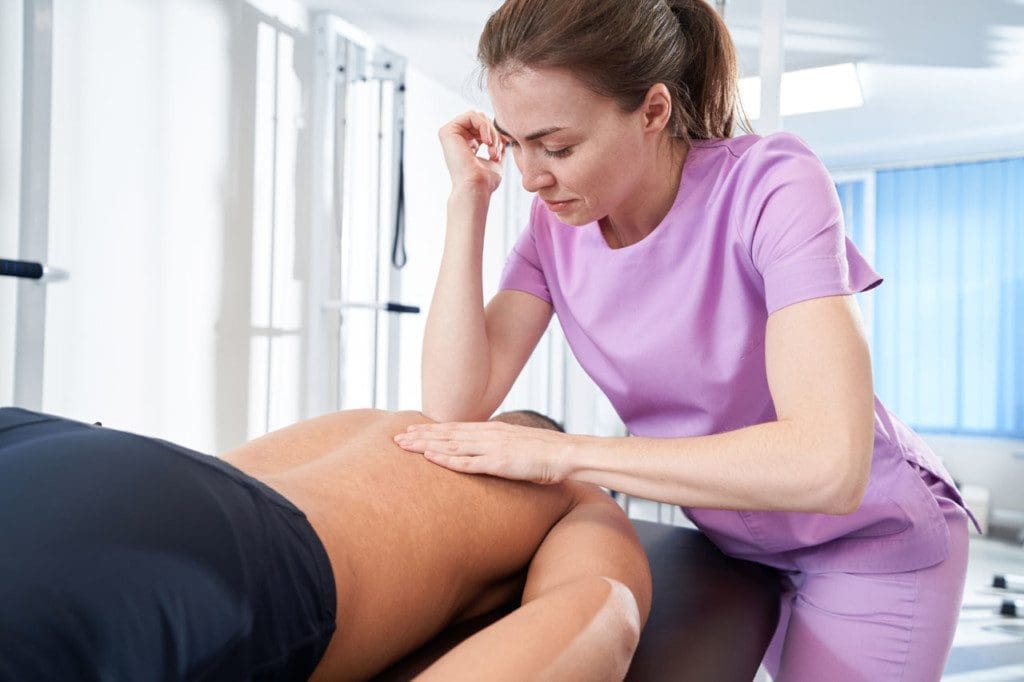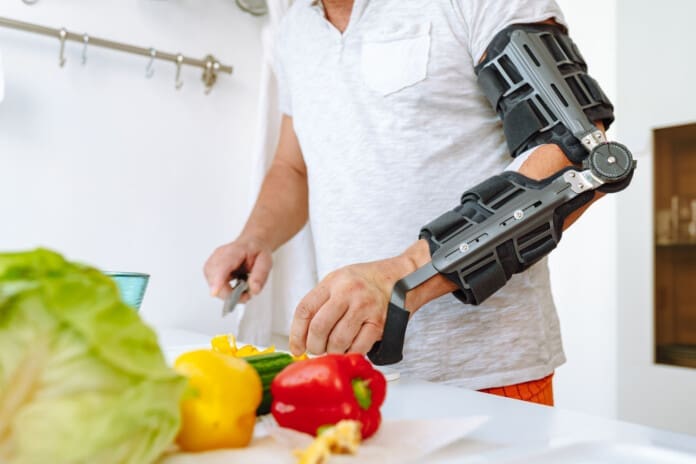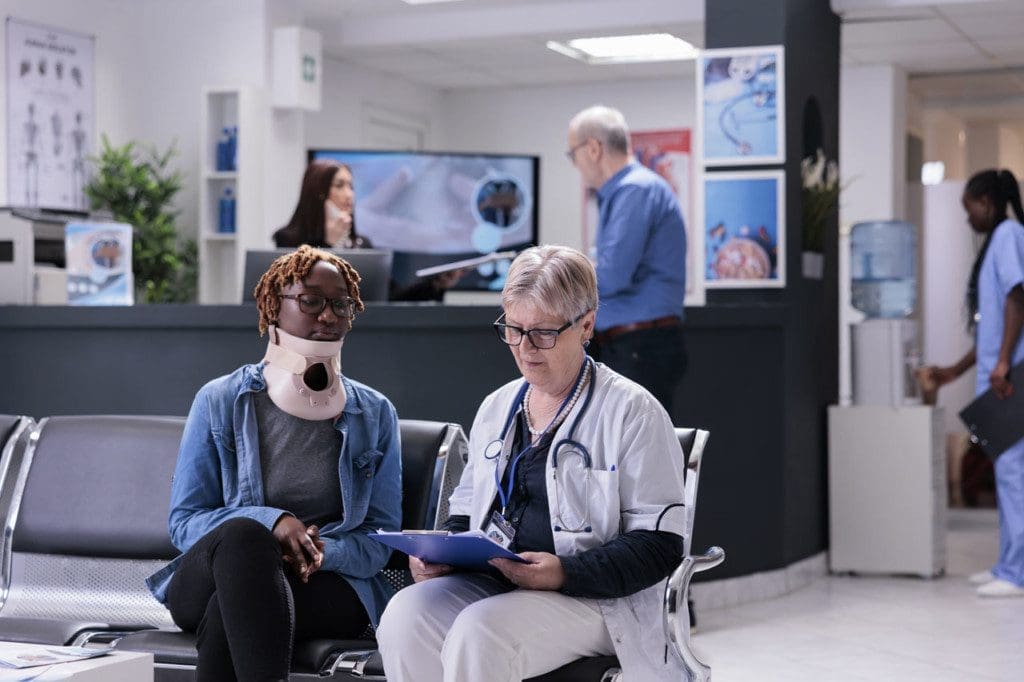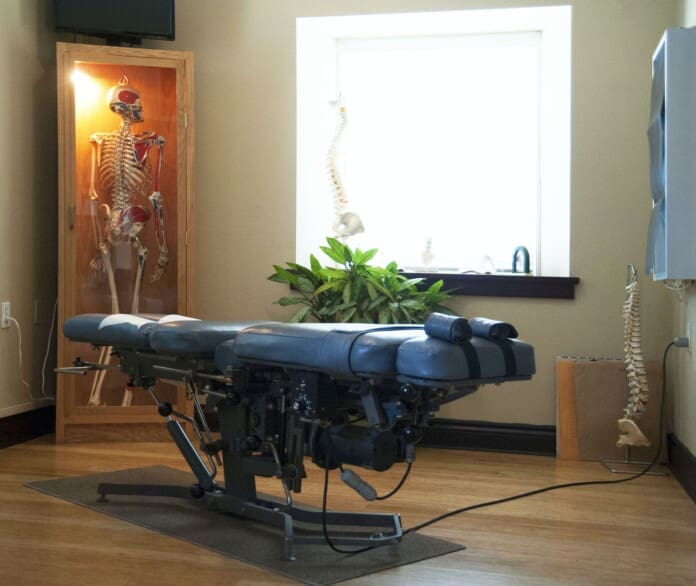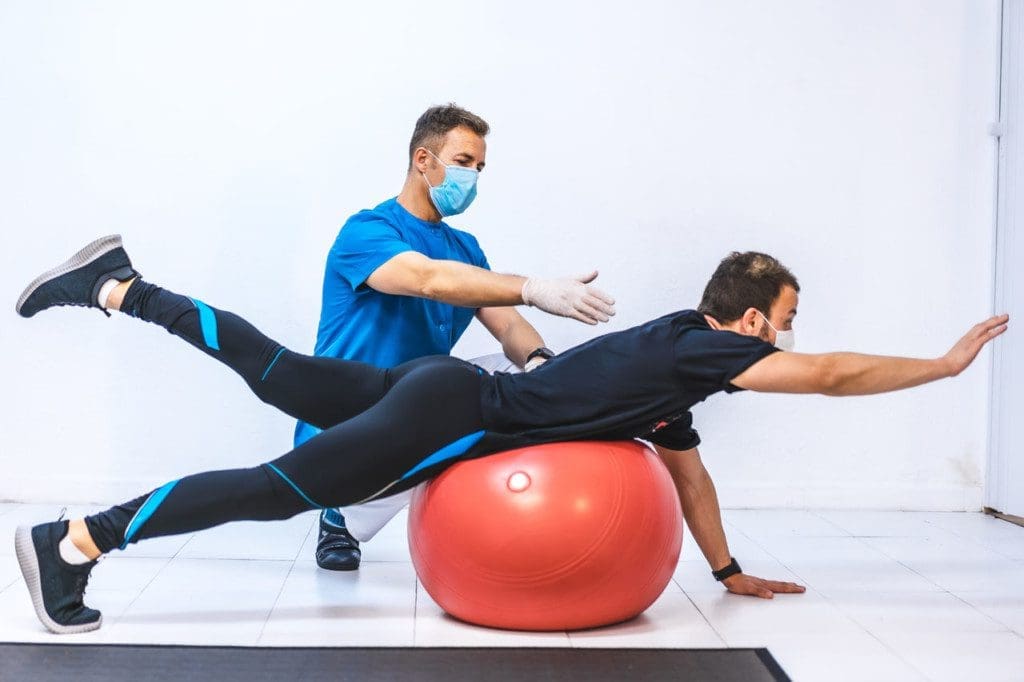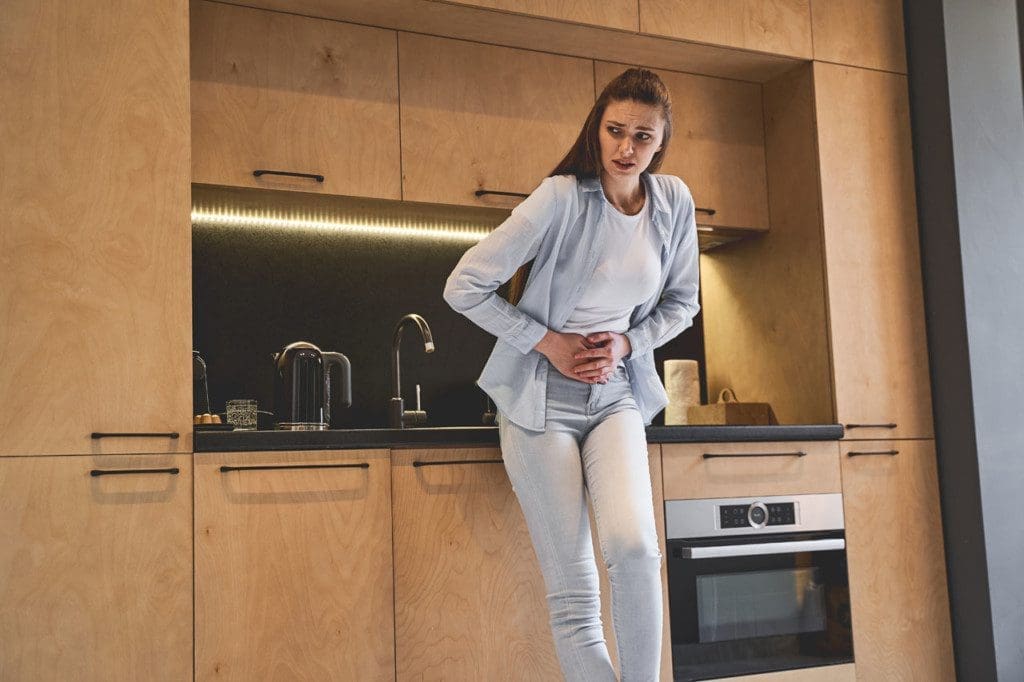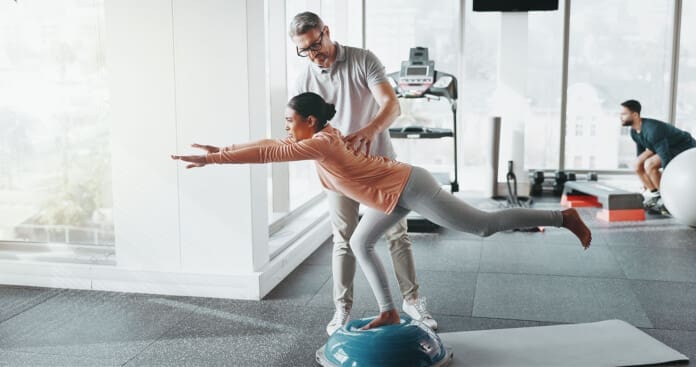Discover the role of musculoskeletal inflammation and how chiropractic care in reducing discomfort and restoring function to your body.
Table of Contents
Chiropractic Care: A Holistic Approach to Managing Joint and Muscle Pain Associated with Inflammation
Key Points
- Chiropractic Care and Pain Relief: Research suggests that chiropractic care may help reduce joint and muscle pain by improving spinal alignment and reducing mechanical stress, potentially alleviating discomfort associated with inflammation.
- Holistic Approach: Chiropractic care often incorporates lifestyle modifications, such as diet and exercise, which can address underlying causes of inflammation, including those associated with gut health or mitochondrial dysfunction.
- Dr. Alexander Jimenez’s Expertise: In El Paso, Texas, Dr. Jimenez combines chiropractic techniques with functional medicine, using advanced diagnostics to support personal injury cases and pain management.
- Controversies Exist: Some medical professionals question the scope of chiropractic practice, emphasizing the need for evidence-based approaches, though modern chiropractic care increasingly aligns with scientific standards.
- Complementary Benefits: Proper nutrition and gut health can enhance the effectiveness of chiropractic care by reducing systemic inflammation and supporting overall musculoskeletal health.
Introduction
If you’ve ever dealt with nagging joint or muscle pain, you know it can feel like a persistent uninvited guest. Whether it’s a stiff knee, a sore back, or achy shoulders, inflammation often plays a starring role in these discomforts. Chiropractic care offers a promising, non-invasive approach to tackle this pain, and we’re here to explore why it works, backed by science and sprinkled with a bit of humor to keep things light.
Chiropractic care focuses on the musculoskeletal system, particularly the spine, to restore proper alignment and function. By doing so, it aims to reduce pain, improve mobility, and support the body’s natural healing processes. But how does this connect to inflammation? And why is someone like Dr. Alexander Jimenez, a renowned chiropractor in El Paso, Texas, a go-to expert for personal injury victims? Let’s delve into the clinical rationale, drawing on research and Dr. Jimenez’s expertise, to explore how chiropractic care can help you achieve a pain-free life.
What Is Inflammation and Why Does It Hurt?
Inflammation is like your body’s overzealous security guard. When it senses an injury or infection, it rushes to the scene, bringing swelling, heat, and sometimes pain to protect you. This acute inflammation is helpful, but when it lingers like an overstaying houseguest, it becomes chronic, damaging tissues like joints and muscles.
Conditions like osteoarthritis, rheumatoid arthritis, and fibromyalgia are often fueled by chronic inflammation. For example, research indicates that mitochondrial dysfunction in osteoarthritis can exacerbate oxidative stress, ultimately leading to cartilage breakdown and pain (Blanco et al., 2011). Environmental factors, such as a poor diet or stress, can also exacerbate inflammation, causing your joints to feel painful.
Imagine your joints as rusty hinges on a door—chronic inflammation keeps them creaky and stiff. Chiropractic care steps in like a skilled mechanic, aiming to lubricate those hinges and get things moving smoothly again.
How Chiropractic Care Tackles Inflammation
Chiropractic care is all about getting your body back in sync. By using spinal adjustments and other manual therapies, chiropractors work to improve joint mobility and reduce mechanical stress, which can help dial down inflammation. Think of it as realigning a wobbly wheel on your car to prevent uneven wear—less stress, less damage.
A study on osteoporotic-kyphotic women showed that a Spinal Proprioceptive Extension Exercise Dynamic (SPEED) program significantly reduced back pain and improved balance (Sinaki et al., 2005). While not directly about chiropractic adjustments, this highlights how targeted interventions on the spine can ease pain and enhance function, principles central to chiropractic care.
Chiropractors also emphasize lifestyle changes. Poor posture, for instance, can strain joints and muscles, fueling the inflammation. By teaching proper posture and ergonomics, chiropractors help you avoid these pitfalls. Plus, they often throw in a dash of humor, like reminding you that slouching at your desk makes you look like a grumpy cat, and nobody wants that!
Chiropractic Care in Personal Injury Cases
If you’ve been in an accident, inflammation and pain can feel like unwelcome souvenirs. In El Paso, Texas, Dr. Alexander Jimenez shines as a beacon for personal injury victims. With over 30 years of experience, he combines chiropractic care with functional medicine, utilizing advanced imaging and diagnostic evaluations to pinpoint injuries and tailor treatments accordingly.
Dr. Jimenez’s approach is unique because he bridges the gap between medical care and legal documentation. Personal injury cases often require detailed reports to support legal claims, and his expertise ensures that injuries are accurately assessed and documented. Whether it’s a car accident or a slip-and-fall, his treatments aim to restore mobility and reduce pain, helping patients get back to their lives.
Picture this: after a fender-bender, your back feels like it’s auditioning for a role in a horror movie. Dr. Jimenez steps in with precise adjustments and a plan that may include nutritional advice to help calm inflammation, ensuring you’re not just patched up but truly on the mend.
The Bigger Picture: Gut, Brain, and Overall Health
Your body is like a symphony orchestra—every part needs to play in harmony. Recent research has highlighted the impact of the gut microbiome and nutrition on overall health, including musculoskeletal issues. The gut-brain axis, for instance, connects gut health to neurological function, potentially affecting inflammation throughout the body (Cryan et al., 2020). Similarly, nutrients such as omega-3 fatty acids can help reduce systemic inflammation, thereby supporting joint health (Gomez-Pinilla, 2008).
Chiropractors, such as Dr. Jimenez, often incorporate nutritional guidance into their practices. A diet rich in anti-inflammatory foods—think salmon, kale, and walnuts—can complement chiropractic adjustments, creating a one-two punch against inflammation. It’s like giving your body a superhero cape to fight off pain and dysfunction.
Addressing Controversies
Chiropractic care isn’t without its skeptics. Some medical professionals have raised concerns about chiropractors overstepping their scope, as seen in a 2006 lawsuit by the Texas Medical Association (Texas Medical Association, 2006). This highlights the importance of chiropractors adhering to evidence-based practices.
However, the field has made strides toward credibility. Modern chiropractors are trained in evidence-based methods, and research supports the effectiveness of manual therapies for pain relief (Murphy et al., 2013). By focusing on science and patient-centered care, chiropractors are working to overcome these criticisms and earn their place in mainstream healthcare.
Unlocking the Secrets of Inflammation- Video

Comprehensive Report: Chiropractic Care for Joint and Muscle Pain Associated with Inflammation
Introduction
Joint and muscle pain can significantly impact quality of life, often driven by chronic inflammation associated with conditions such as osteoarthritis, rheumatoid arthritis, or injuries. Chiropractic care provides a non-invasive, holistic approach to managing pain by addressing musculoskeletal dysfunction and promoting overall health. This report examines the clinical rationale behind the effectiveness of chiropractic care, drawing on research and the expertise of Dr. Alexander Jimenez, a distinguished chiropractor in El Paso, Texas. We’ll also examine the role of environmental factors, the gut microbiome, and nutrition, while addressing controversies in the field.
Understanding Inflammation and Its Impact
Inflammation is the body’s response to injury or infection, characterized by swelling, heat, and pain. Acute inflammation aids healing, but chronic inflammation can damage tissues, particularly in joints and muscles. Conditions like osteoarthritis (OA) involve cartilage degradation and increased chondrocyte mortality, often linked to mitochondrial dysfunction. Research indicates that decreased activity in mitochondrial complexes I, II, and III in OA chondrocytes contributes to oxidative stress, inflammation, and cartilage breakdown (Blanco et al., 2011).
Environmental factors, such as poor diet or stress, can exacerbate inflammation. For instance, iron overload, as seen in conditions like hemochromatosis, is associated with joint pain and osteoarthritis phenotypes, with a 50.5% risk of OA in affected patients compared to 28.9% in controls (Vasquez, 1996; Richette et al., 2010). These findings underscore the necessity for a comprehensive approach to pain management that addresses both symptoms and their underlying causes.
| Condition | Inflammation Mechanism | Impact on Joints/Muscles |
|---|---|---|
| Osteoarthritis | Mitochondrial dysfunction, oxidative stress | Cartilage degradation, joint pain |
| Hemochromatosis | Iron overload, synovial inflammation | Increased OA risk, joint pain |
| Fibromyalgia | Chronic systemic inflammation | Muscle pain, reduced mobility |
Chiropractic Care: Mechanisms and Evidence
Chiropractic care primarily involves spinal manipulation and manual therapies to restore joint mobility and reduce pain. By correcting misalignments, chiropractors alleviate mechanical stress, which can decrease inflammation. A study on gluteal muscle activation demonstrated that stimulating proprioceptive mechanisms improved muscle function in patients with low-back pain, suggesting that similar principles in chiropractic care could enhance spinal stability and reduce pain (Bullock-Saxton et al., 1993).
The Spinal Proprioceptive Extension Exercise Dynamic (SPEED) program demonstrated significant reductions in back pain (P = .001) and improved balance (P = .003) in osteoporotic kyphotic women (Sinaki et al., 2005). These findings align with chiropractic principles, as spinal adjustments and exercises can enhance musculoskeletal function, potentially reducing pain associated with inflammation.
Dr. Alexander Jimenez’s approach exemplifies this. His practice integrates functional medicine, addressing immune and inflammatory imbalances through chiropractic adjustments and lifestyle interventions. His webinars on topics like “Musculoskeletal Rehabilitation” and “Fibromyalgia & Inflammation” emphasize holistic care (Jimenez, n.d.).
Personal Injury and Chiropractic Care
In personal injury cases, such as those from car accidents or falls, inflammation and pain are common. Dr. Jimenez, based in El Paso, Texas, is a leading practitioner in this field, with over 30 years of experience. He utilizes advanced imaging techniques (e.g., MRI, X-rays) and diagnostic evaluations to accurately assess injuries, linking clinical findings to legal documentation for personal injury claims. His role as a liaison ensures that patients receive comprehensive care while supporting their legal cases.
For example, in cases of sciatica—pain radiating from the lower back due to nerve compression—chiropractic adjustments can restore spinal alignment, reducing inflammation and pain (Sciatica Clinic, n.d.). Dr. Jimenez’s tailored treatment plans often include nutritional advice to combat inflammation further and enhance recovery.
The Role of Gut Health and Nutrition
The gut microbiome influences systemic inflammation, which can affect musculoskeletal health. Research indicates that gut dysbiosis is associated with neurological disorders and may contribute to inflammation in conditions such as arthritis (Cryan et al., 2020). Nutrients, such as omega-3 fatty acids, reduce inflammation and support brain and joint health (Gomez-Pinilla, 2008). Chiropractors often incorporate dietary recommendations to complement their treatments, recognizing that a healthy gut can enhance the body’s ability to manage pain.
| Nutrient | Source | Benefit |
|---|---|---|
| Omega-3 Fatty Acids | Salmon, walnuts | Reduces systemic inflammation |
| Antioxidants | Kale, broccoli | Protects against oxidative stress |
| Vitamin D | Sunlight, fortified foods | Supports bone and joint health |
Controversies and Progress in Chiropractic Care
Chiropractic care has faced scrutiny, notably in a 2006 lawsuit by the Texas Medical Association, which challenged chiropractors performing procedures such as needle electromyography, arguing that they exceeded their scope (Texas Medical Association, 2006). Such controversies highlight the need for evidence-based practice.
However, the profession has evolved. Modern chiropractors are trained in evidence-based methods, supported by research, including randomized controlled trials, that demonstrate the effectiveness of manual therapies (Murphy et al., 2013). The field’s commitment to integrating science ensures safer, more effective care.
Conclusion
Chiropractic care offers a promising approach to managing joint and muscle pain associated with inflammation. By improving joint function, reducing mechanical stress, and incorporating lifestyle changes, chiropractors address both symptoms and underlying causes. Dr. Alexander Jimenez’s work in El Paso exemplifies this, particularly for personal injury victims, where his use of advanced diagnostics ensures comprehensive care. Combined with insights into gut health and nutrition, chiropractic care can be a cornerstone of holistic pain management.
Disclaimer: This blog post is for informational purposes only and should not be taken as medical advice. Always consult a qualified healthcare professional before starting any new treatment.
References
- Blanco, F. J., Rego, I., & Ruiz-Romero, C. (2011). The role of mitochondria in osteoarthritis. Nature Reviews Rheumatology, 7(3), 161-169. https://doi.org/10.1038/nrrheum.2010.213
- Bullock-Saxton, J. E., Janda, V., & Bullock, M. I. (1993). Reflex activation of gluteal muscles in walking: An approach to restoration of muscle function for patients with low-back pain. Spine, 18(6), 704-708. https://pubmed.ncbi.nlm.nih.gov/8516698/
- Cryan, J. F., O’Riordan, K. J., Sandhu, K., Peterson, V., & Dinan, T. G. (2020). The gut microbiome in neurological disorders. The Lancet Neurology, 19(1), 179-194. https://doi.org/10.1016/S1474-4422(19)30356-4
- Gomez-Pinilla, F. (2008). Brain foods: the effects of nutrients on brain function. Nature Reviews Neuroscience, 9(7), 568-578. https://doi.org/10.1038/nrn2421
- Jiménez, A. (n.d.). LinkedIn profile. Retrieved from https://www.linkedin.com/in/dralexjimenez/
- Murphy, D. R., Schneider, M. J., Seaman, D. R., Perle, S. M., & Nelson, C. F. (2013). How can chiropractic become a respected mainstream profession? The example of podiatry. Chiropractic & Manual Therapies, 21(1), 1-10. https://doi.org/10.1186/2045-709X-21-16
- Sciatica Clinic. (n.d.). Chiropractic care overview for joint and biomechanical restoration. Retrieved from https://sciatica.clinic/chiropractic-care-overview-for-joint-and-biomechanical-restoration/
- Sinaki, M., Brey, R. H., Hughes, C. A., Larson, D. R., & Kaufman, K. R. (2005). Significant reduction in risk of falls and back pain in osteoporotic-kyphotic women through a Spinal Proprioceptive Extension Exercise Dynamic (SPEED) program. Mayo Clinic Proceedings, 80(7), 849-855. https://doi.org/10.4065/80.7.849
- Texas Medical Association. (2006). Physicians ask court to protect patients from illegal chiropractic activities. Retrieved from https://www.texmed.org/Template.aspx?id=5259
- Vasquez, A. (1996). Musculoskeletal disorders and iron overload disease: Comment on the American College of Rheumatology guidelines for the initial evaluation of the adult patient with acute musculoskeletal symptoms. Arthritis & Rheumatism, 39(10), 1767-1768. https://doi.org/10.1002/art.1780391027



